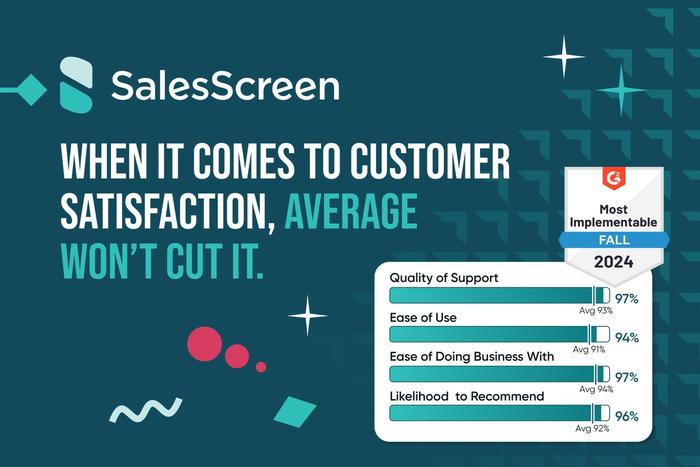If you’ve ever attended or sponsored events like Dreamforce, CES, and SXSW, you understand just how much of a feat this really is.
Sponsoring and attending events involves multiple teams pulling multiple levers at the same time — which means things can get pretty chaotic pretty quickly. Especially if your sales and marketing teams aren’t aligned before, during, and after an event.
Teams need to answer questions like:
- Who is in charge of ideating the booth design?
- What about purchasing the swag?
- Who is scheduling meetings?
- Who is attending?
- Are you hiring someone to set up your booth?
Ugh. I’m already stressed just thinking about all the details that need to be ironed out before the big day.
Which is why sales and marketing alignment at events is crucial. There are so many gears turning that one argument, miscommunication, or blame-game can quickly derail the entire train leading up to the event.
Good news, events provide a perfect opportunity for sales and marketing teams to work together to accomplish a larger, unifying goal while driving increased revenue.
When sales and marketing teams work together, companies can see 36% higher customer retention and 38% higher sales win rates.
And who doesn’t want increased retention and win rates?
That’s why we’ve put together some tips that will get your teams aligned before, during, and after the big event.
Understand & Delegate Responsibilities

Overall, the marketing team’s job is to generate leads and the sales team’s job is to close them.
But…
Is Suzy or Sam responsible for ordering the swag? What about the overall booth design? Who is sending out meeting requests at the event? Who is live tweeting at the event using the hashtag? Who follows up with new prospects generated from the event?
Yes, those are very, very granular questions, but answering them will prevent finger pointing later on.
Because companies often don’t have official event or field marketers, preparing for events tends to fall across an array of individuals. This is another reason having sales and marketing alignment at events is so crucial.
Treat a sponsored event like a project and decide what resources are needed and who is responsible for what. You may even want to assign a ‘project manager’ over the event that ensures clear communication between both sides of the aisle.
To ensure success, host a weekly meeting leading up to the event to ensure that tasks are being accomplished and goals are within reach. These meetings don’t need to have the entire team involved but should have at least two people from sales and marketing to ensure consistent alignment leading up to the event.
Create Unified Sales and Marketing Goals
Nothing brings teams together like sharing a common goal.
And ultimately, sales and marketing teams always have the same overarching goal: generate revenue. But this can get a little lost in the day-to-day execution which is why reiterating unifying goals before an event creates sales and marketing alignment.
Just like delegating responsibilities creates unity in understanding, creating unifying sales and marketing goals allows teams to understand the overarching objective of their efforts. Teams won’t flail about trying to figure out what they’ll be measured against to determine event success, they’ll know exactly what they’re accountable for both as individuals and as a unit.
When outlining individual responsibilities, unify the teams again by discussing the overall goals of the event.
Are you looking to book 25 new demos while you’re there? Or are you really trying to get people to see the CEO keynote? What about reaching out to your current clients? What percentage of meetings need to close to see a return on event?
Strategy and tactics will differ between teams but they should all point towards the unifying ‘smart’ goals and bring together the two silos into one cohesive goal-crushing machine. Follow up with these goals during every weekly meeting to ensure that they’re being met.
Create a Target List of Attendees

Raise your hand if you like saving time.
Okay, don’t actually do that because that would just be embarrassing and we already know the answer is yes.
The biggest issue with events is the signal versus noise issue or, as I like to say, whose hand should you be shaking while you’re there. Dreamforce has over 175,000 attendees but not all of them will be your ideal customer. Why waste your precious time pursuing them at an event?
By creating a target list of attendees based on the unifying goals, teams can focus their efforts only on what matters instead of trying to reach out to everyone attending.
Marketing can start executing account based marketing tailored to those individuals while sales teams can start real conversations with hyper-relevant attendees before the event even starts.
Creating a list of target companies and attendees will save your team frustrations on solving the ‘who should I be talking to’ problem while creating larger increased revenue opportunities by catching up with current clients or focusing on likely-to-convert prospects and leads.
Schmoozing is great but let’s leave that to the networking events. Sales and marketing should be aligned on exactly who they’re targeting on the floor and and when extending meeting invites.
When organizations are aligned, they can achieve up to 19% faster revenue growth and 15% higher profitability, so why wouldn’t you want to focus on conversions rather than conversations?
Use Technology to Bridge Communication

We’ve talked to dozens upon dozens of sales and marketing teams over the last few months.
We could write paragraphs on the disaster that is sales and marketing communications around sponsoring events, but we’ll save us both the time and sum it up by saying… it’s kind of a hot mess.
You really can’t have sales and marketing alignment at events if teams can’t easily communicate with each other. Yet this is one of the major pain points teams have established in our conversations over and over. It’s a mess of spreadsheets, emails, Slack messages, calendar invites, and half-filled CRM entries.
Ensuring that your team has the proper way to schedule and track meetings across both sales and marketing team members is one of the easiest ways to align both groups at events. What happens if someone messages a marketing person on social media that they’re attending an event and want to schedule a meeting? Or what happens if John’s client reaches out to him saying he’s attending and they should catch up, but John isn’t attending?
There needs to be a unified place that both teams can see the schedule of those actually attending the event.
SummitSync’s event intelligence platform works by aligning sales and marketing from the foundation of communication through a single dashboard that helps teams discover prospects attending an event, schedule meetings with them, and automate the workflow of following up and measuring return on event (ROE).
Sales and Marketing Alignment at Events = Success
Sponsoring events can be a time-consuming and costly expenditure on every marketing budget. Make every event dollar go further by setting yourself up for event success by aligning your sales and marketing team through unified goals and KPIs, clear communication, and delegated responsibilities.
With events consuming 20–25% of B2B marketing budgets, the opportunity cost of not aligning your teams leaves a lot of money on the table.
Author bio
Kathryn M. Kosmides is the Director of Marketing at SummitSync, an event intelligence platform helping sales and marketing teams discover relevant attendees, schedule meetings, and measure return on event (ROE).










